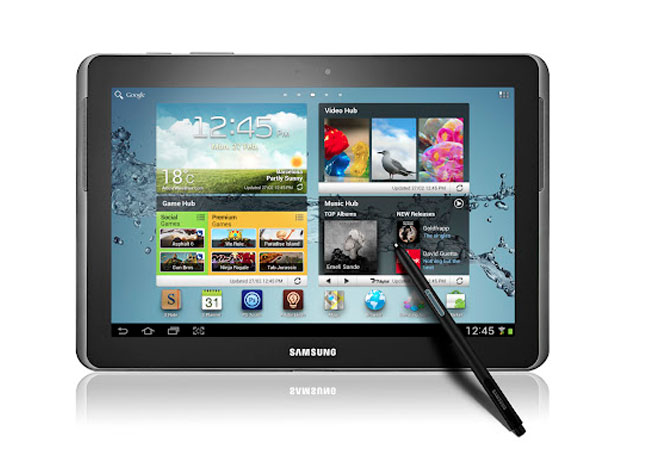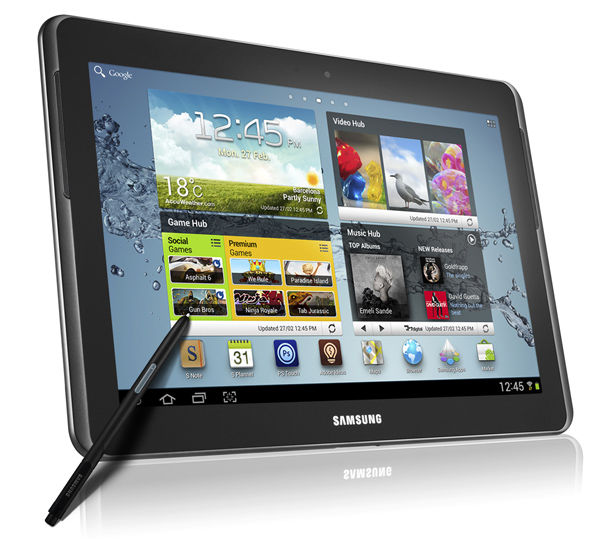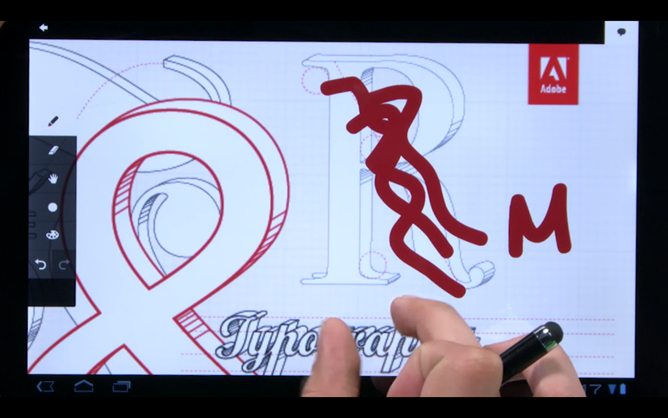Five years ago, launching a decent streaming platform took millions. Now? A teenager with a laptop can build something that reaches millions. That shift…
Previewed: Samsung Galaxy Note 10.1

Samsung did well with its range of tablets, and continues to do well as it pumps out slightly upgraded iterations of its hardware. The Samsung Galaxy Note 10.1 is no different, but represents a slight bump in hardware specs, as well as being one of the first tablets to offer a stylus interface option. Follow us as we weave you through the highs and lows of Samsung’s latest offering.
Hardware, more of the same
Let’s start with the design of the Note 10.1. The back is matte, wiping out fingerprint nightmares and the speakers have slightly shifted around. That’s it for cosmetic differences between the Note 10.1 and the Tab 10.1. But hey, if it ain’t broke and all that. It still has the underwhelming 3MP rear camera and 16, 32 or 64GB internal memory options. We would have hoped for a brighter, more pixel-dense display, but we’ll have to make do with 1280×800 screen which is still pretty poor in direct sunlight.
It’s all about the S-Pen
It really is. With Ice Cream Sandwich as its OS, and the hateful TouchWiz UI skinning it, the S-Pen makes a remarkable difference to the overall performance of the Note 10.1. Yes, it seems daft to bring back the stylus from the dead, but if anyone can do it, it’s Samsung. The Galaxy Note has already rocked the S-Pen for close to a year now, there was no reason for Samsung to kill it off.
The S-Pen doesn’t add to the speed of the device, and overall, it seems under-optimised for the massive 1GB RAM and 1.4Ghz CPU. Overall navigation is a treat, but app loading is sluggish at best. This is a preview build of the device, so hopefully Samsung will fix this niggling error before its August 2012 release.
The dear old S-Pen has received a nifty upgrade though, in the form of an eraser located on the back of the stylus tool. The S-Pen is also slightly longer and thicker to accompany the size of the Note 10.1. The S-Pen does not, however, solve the input lag which is strongly felt in many areas of the device. I’m happy to say though, that after a few hours of testing, we settled into a pleasant middle ground in regards to the input.
Samsung has also, thankfully, added a cursor which follows the pen’s movements. Writing as if it is an actual pen won’t do you any good, users will need to ply focus into their strokes to receive any sort of usability out of the stylus. With time though, and in the final hardware build of the Note 10.1, these issues will hopefully be ironed out.
A treat in store for the photo editing fan
What the Galaxy Note 10.1 excels at is in delivering a superlative software experience. Pre-installed on the device is Polaris Office, Zinio, Photo Editor, Amazon Kindle store, Netflix, Game Hub and loads more. For now, let’s ignore the stock-standard Android apps and concentrate on the S-Pen specific ones.
As seen on the Galaxy Note, the S Memo app is super dandy, super handy. Users can select a number of writing themes such as graph paper or musical notes, and start writing as naturally as the S-Pen allows them to. Writing on the S Memo app is frankly, as intuitive as hell. For note taking, users write in the bottom half of the screen and the S Memo app easily translates even the most hideous of scrawls into legible text. Swipe back to delete, swipe to space; it’s as natural as can be. There are plenty of added extras to this app, but overall it’s a treat to use. Samsung also delivers an S Note app, simple scribbling software. This is, however, a throwaway app at best and seems like a half-hearted attempted to shoe-in further uses for the S-Pen
PS Touch and Adobe ideas are a little more powerful and robust in execution. PS Touch is a delight, it’s a semi-professional photo-editing tool which doesn’t pander to the masses. PS Touch will never, ever replace a full-fledged Photoshop setup on a beefy workstation, but for on-the-go editing, it’s incredible.
Adobe Ideas is the entry-level photo editing application and the one we spent the most amount of time on. Load an image, adjust the layers, change colours, and effects and crop out red-eye. When users grow bored of Adobe Ideas, PS Touch awaits them. Hell, there’s a library of tutorials so even the greenest of photo editors will easily get to grips with this basic application.
A photo-editor’s dream tablet?
The core user is the designer, someone who wants to sit down, bugger around with an image and upload it to their home station for editing at a later stage. Outside of this user, the Samsung Galaxy Note 10.1 seems like a wasted update. Will the S-Pen ever find a comfortable place in a geek society overwhelmed with superior tablets? Come August, the Note 10.1 will find out if it hits that crucial mark. This is only a preview, and the final build may yet target the wider market.
Images care of ZDNet.co.uk





